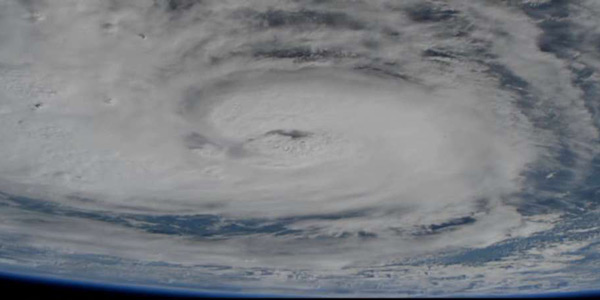By Tom Kleckner
ERCOT said Monday that conditions remained stable on its system, despite the loss of two 345-kV transmission lines and other major high-voltage outages that cut power to more than 300,000 customers following Hurricane Harvey’s landfall in Texas on Friday night.
The two 345-kV lines serve the Texas Gulf Coast near Corpus Christi and Victoria, at the center of the storm’s landfall. More than 6,700 MW of generation capacity were offline for storm-related reasons, including a very small volume of renewables.
ERCOT said electricity demand has been about 20,000 MW below normal since Harvey came ashore, peaking at less than 44,000 MW because of structural damage along the coast and cooler temperatures. System restoration times will vary depending on the extent of damage, outage locations and weather conditions, the ISO said.
The ISO issued an emergency notice Friday and brought on extra engineering staff throughout the weekend to support efforts in its Taylor operations center for Harvey, the first Category 4 storm to hit Texas since 1971.
ERCOT spokesperson Robbie Searcy said the day-ahead market cleared on time over the weekend.
Harvey was downgraded to a tropical storm Saturday afternoon, but it has spawned tornadoes and continues to drench much of the Texas Gulf Coast with torrential rains. The downpours are expected to continue well into the week.
The number of consumers without power peaked at just more than 300,000 early Saturday afternoon, based on reports from transmission providers in the affected areas. As many as 157 circuits were out of service at one point, with outages heaviest near Corpus Christi and Victoria.
ERCOT said extended outages are likely in most of those areas, and the outage numbers will fluctuate as transmission providers work to restore power.
The ISO has created a special page on its website to provide the latest updates on restoration efforts.
Houston’s two major airports — William P. Hobby and George Bush Intercontinental — were both closed over the weekend. They may be reopened as soon as Wednesday.
The U.S. Coast Guard closed multiple ports along the Texas Gulf Coast, including those at Houston, Galveston, Texas City, Freeport and Corpus Christi.
ERCOT is responsible for about 90% of Texas’ load, including Houston and much of the affected coastal region. MISO is responsible for Southeast Texas, which includes the cities of Beaumont, Port Arthur and The Woodlands.
MISO also manages parts of Arkansas, Louisiana and Mississippi, where the National Weather Service was forecasting as much as 4 inches of rain over the next five days.
MISO South Region Operations Director Tag Short said the RTO was activating its “established protocols” to maintain grid reliability and had additional operators and support staff in place and on call.
Spokesman Mark A. Brown said Sunday night that the MISO transmission grid remained stable, but that the RTO remained in a severe weather alert.
“Our region could still face significant amounts of rainfall and potential flooding,” he said. “We will be carefully monitoring those conditions and will be prepared to take the appropriate steps to maintain the reliability of the transmission grid across the MISO footprint.”
Entergy Texas reported more than 7,600 customers were without power as of 8:30 a.m. Sunday. “Crews are safely restoring power as quickly as possible, but the storm’s continued wind, rain, flooding and falling trees could make it difficult to access Entergy’s equipment and slow restoration,” the company said. It serves more than 440,000 customers in 27 counties.








